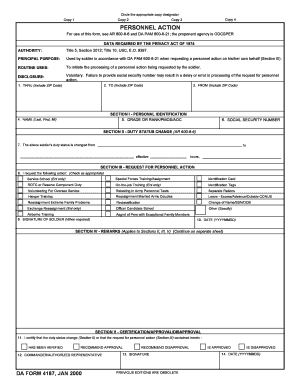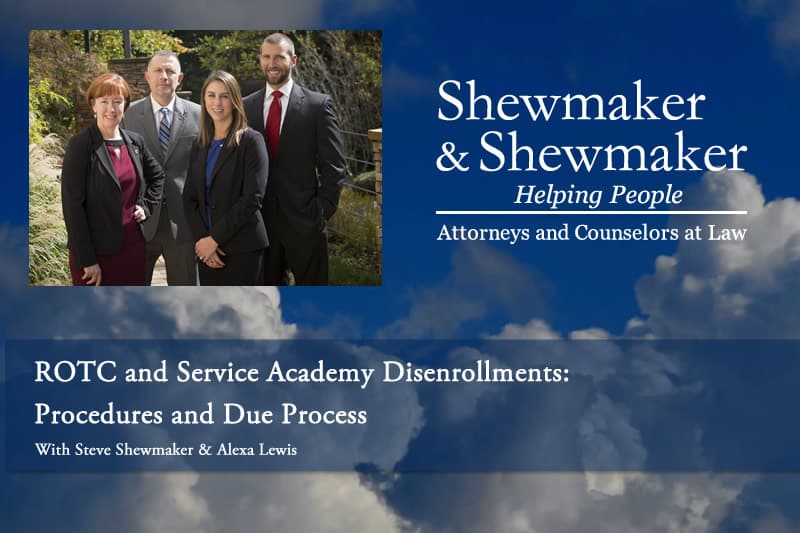Rotc Disenrollment Regulation
Understanding ROTC Disenrollment Regulations
ROTC, or Reserve Officers' Training Corps, is a program that allows college students to receive military training while pursuing their education. It prepares them for a future career as an officer in the United States Armed Forces. However, there are certain circumstances where ROTC cadets may face disenrollment, which could have serious implications on their academic and career plans.
Disenrollment Appeals in ROTC
Disenrollment from ROTC can occur due to various reasons, including academic performance, disciplinary issues, or failure to meet physical or medical requirements. If a cadet receives notice of disenrollment, they have the right to file an appeal. The appeals process provides an opportunity for the cadet to present their case and argue why they should be allowed to continue in the program.
Importance of Legal Representation
When facing a disenrollment hearing, it is crucial for ROTC cadets to seek legal representation. Hiring an experienced attorney who specializes in military defense can make a significant difference in the outcome of the case. A qualified attorney will have a deep understanding of ROTC disenrollment regulations and can navigate the complex legal proceedings on behalf of the cadet.
Frequently Asked Questions (FAQs)
1. What are the common reasons for ROTC disenrollment?

There are several common reasons for ROTC disenrollment, including:
- Inadequate academic performance
- Violations of the ROTC program's code of conduct
- Failure to meet physical fitness requirements
- Medical disqualifications
It is important for cadets to maintain good academic standing, adhere to the program's rules, and meet the necessary physical and medical standards to avoid disenrollment.
2. Can a cadet appeal their disenrollment?
Yes, a cadet has the right to appeal their disenrollment decision. The appeals process allows the cadet to present their case and provide any evidence or supporting documentation that can help their situation. It is crucial to have the guidance of a qualified attorney who can navigate the appeals process effectively.
3. How can a military defense lawyer assist in a disenrollment hearing?

A military defense lawyer can play a crucial role in a disenrollment hearing. They can:
- Review the cadet's case and assess the strength of the appeal
- Collect evidence and interview witnesses to support the cadet's position
- Prepare a persuasive argument on behalf of the cadet
- Guide the cadet through the appeals process and ensure their rights are protected
- Negotiate with the ROTC program representatives to reach a favorable resolution
Hiring a knowledgeable attorney who specializes in military defense can greatly increase the chances of a successful outcome in a disenrollment hearing.
Conclusion
Understanding ROTC disenrollment regulations is crucial for cadets who find themselves facing the possibility of being removed from the program. The appeal process and the assistance of a military defense lawyer can greatly influence the outcome of a disenrollment hearing. It is essential for cadets to be aware of their rights, consult with legal professionals, and present their case effectively to safeguard their academic and career aspirations.
References:
- https://www.colelawgrouppc.com/blog/wp-content/uploads/2020/07/Screen-Shot-2020-07-07-at-4.58.49-PM.png
- https://www.calcagnilaw.com/wp-content/uploads/2021/08/military-defense-lawyer.png
ROTC Disenrollment Lawyers – What Is ROTC Disenrollment? | Gonzalez
 Image Source : ucmjdefense.com
Image Source : ucmjdefense.com Army ROTC Disenrollment Appeals — Cole Law Group Blog — July 17, 2020
 Image Source : www.colelawgrouppc.com
Image Source : www.colelawgrouppc.com law disenrollment appeals
Fighting NROTC And ROTC Disenrollment - Korody Law, P.A.
rotc disenrollment nrotc fighting
ROTC Disenrollment Lawyer | Law Offices Of David P. Sheldon
 Image Source : www.militarydefense.com
Image Source : www.militarydefense.com Fillable Online Field Trip Request Form - Kroc Center SD Fax Email
 Image Source : www.pdffiller.com
Image Source : www.pdffiller.com ROTC Disenrollment Hearings Defense Attorney - Military Defense Lawyer
 Image Source : www.calcagnilaw.com
Image Source : www.calcagnilaw.com ROTC Disenrollment Boards | Military Defense | Call 770-939-1939
 Image Source : militarydefense-lawyer.com
Image Source : militarydefense-lawyer.com disenrollment rotc aggressive guardsmen airmen
ROTC And Service Academy Disenrollment Procedures And Due Process
 Image Source : militarydefense-lawyer.com
Image Source : militarydefense-lawyer.com Rotc disenrollment nrotc fighting. Fighting nrotc and rotc disenrollment. Disenrollment rotc aggressive guardsmen airmen. Rotc disenrollment lawyers – what is rotc disenrollment?. Army rotc disenrollment appeals — cole law group blog — july 17, 2020